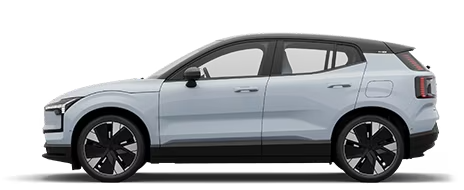A Deep Dive into Volvo's Active Safety Technology: Safety Reimagined
July 19 2023,

One of the quintessential hallmarks of Volvo's ethos is an unwavering commitment to safety. This Swedish automaker has long been a trailblazer in the realm of automotive safety technology, starting from the introduction of the three-point seatbelt in 1959 to today's most advanced active safety systems. Let's take a deeper look into the world of Volvo's pioneering technologies that are making each drive safer.
Active Safety: Volvo’s Forefront
Active safety technology refers to systems that actively assist in preventing accidents. These technologies aim to increase vehicle safety and enhance the driving experience. Volvo’s commitment to reducing fatalities and serious injuries in their new vehicles by 2020 set the stage for the impressive array of active safety technology found in their cars today.
City Safety
At the heart of Volvo's active safety technology is the City Safety suite. This system uses radar and camera technology to identify potential hazards, such as other vehicles, cyclists, pedestrians, and large animals, both day and night. If it detects a possible collision, City Safety warns the driver, and if the driver does not respond in time, it can automatically apply the brakes to help avoid or mitigate a collision.
Pilot Assist
Pilot Assist is Volvo's semi-autonomous driving aid. This system assists with steering, acceleration, and braking on well-marked roads up to speeds of 130km/h. It's designed to make long journeys and heavy traffic less strenuous for the driver. Though it's not a fully self-driving system, Pilot Assist represents a significant leap forward in driving assistance technology.
Run-off Road Mitigation
Volvo's Run-off Road Mitigation uses advanced algorithms to assess the road surface and the car's behaviour. If the system detects a potential run-off road scenario, it can apply steering and braking interventions to keep the car on the road. Should the car leave the road, another Volvo safety feature, the Run-off Road Protection, automatically tightens the front seat belts to keep the occupants securely in place.
Cross Traffic Alert
Cross Traffic Alert, part of the Blind Spot Information System, uses radar sensors to alert the driver of crossing traffic from the sides when reversing out of a parking space. This system can also apply brakes automatically if there is a risk of collision, a feature particularly useful in tight and crowded parking lots.
Oncoming Lane Mitigation
Oncoming Lane Mitigation is designed to help drivers avoid collisions with vehicles in an oncoming lane. The system works by warning the driver when they cross lane markings unintentionally, and if necessary, can automatically guide the car back to its own lane.
The Path Ahead
Volvo’s philosophy of safety transcends beyond a mere selling point, it represents their guiding principle, their raison d'être. Volvo has already announced plans to implement autonomous driving technology in its vehicles, promising a future where accidents are a thing of the past. They have also put forth Vision 2020, a bold initiative that nobody should be killed or seriously injured in a new Volvo car.
In conclusion, Volvo's active safety technology is impressive, innovative, and focused on one thing: protecting those inside and outside of the vehicle. The meticulous attention to detail, extensive safety features, and pioneering work in this field have only reaffirmed Volvo’s position as a leader in automotive safety technology. With Volvo at the helm, we can safely say that the future of automotive safety looks promising indeed.

























